Discover 15 hidden attractions, cool sights, and unusual things to do in Ecuador. Don't miss out on these must-see attractions: Carondelet Palace (Quito), El Panecillo (Quito) or Basílica del Voto Nacional (Quito).
Below, you can find the list of the most amazing places you should visit in Ecuador.
Table of Contents
Carondelet Palace, Quito
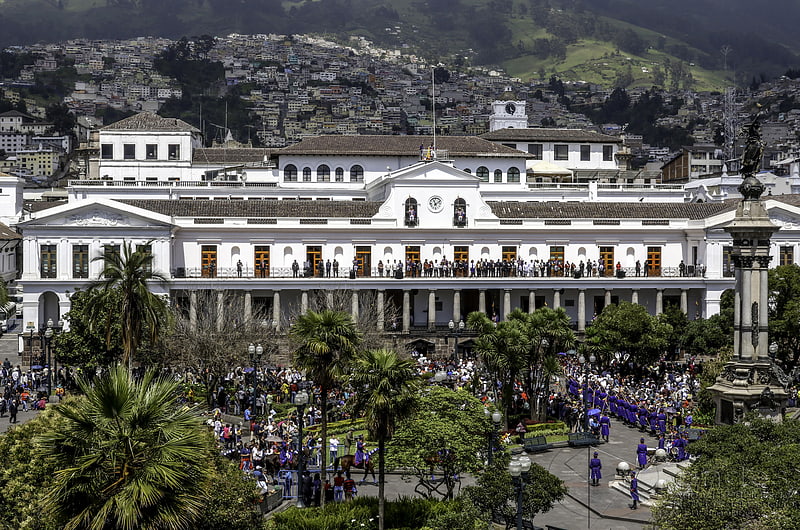
Also known as: Palacio de Carondelet
Palace in Quito, Ecuador. Carondelet Palace is the seat of government of the Republic of Ecuador, located in Quito. Access is by the public space known as Independence Square or Plaza Grande, around which are also the Archbishop's Palace, Municipal Palace, Hotel Plaza Grande, and Metropolitan Cathedral.[1]
El Panecillo, Quito
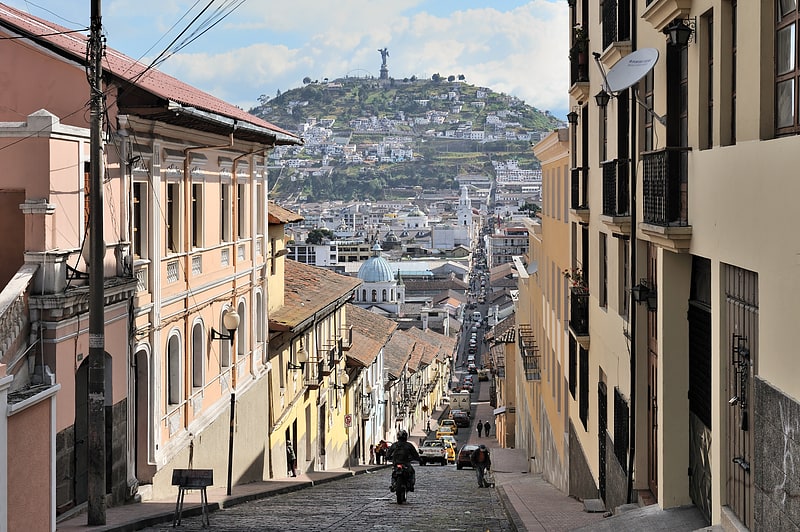
Hill in Ecuador. El Panecillo is a 200-metre-high hill of volcanic-origin, with loess soil, located between southern and central Quito. Its peak is at an elevation of 3,016 metres above sea level. The original name used by the aboriginal inhabitants of Quito was Yavirac. According to Juan de Velasco, a Jesuit historian, there was a temple on top of Yavirac where the Indians worshiped the sun until it was destroyed by the Spanish conquistadores. The street that leads up to El Panecillo is named after Melchor Aymerich.[2]
Address: Costado del Centro Historico, 170150 Quito (Centro Histórico)
Basílica del Voto Nacional, Quito
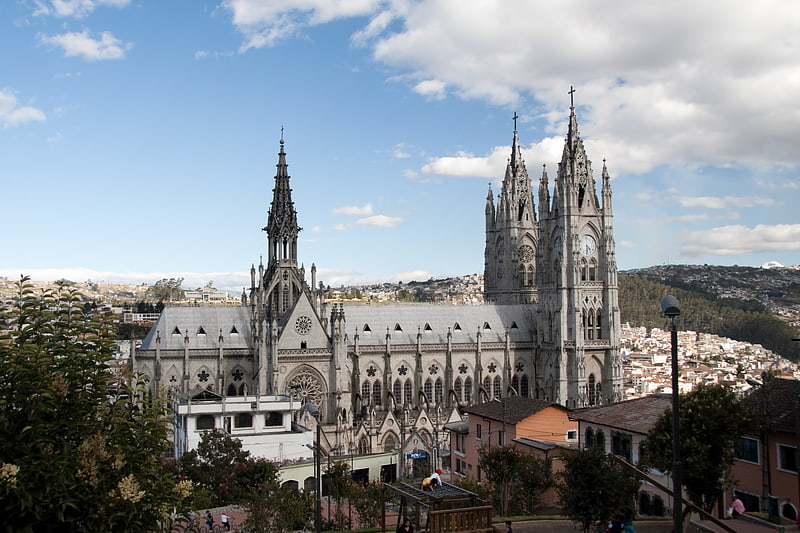
Catholic church in Quito, Ecuador. The Basilica of the National Vow is a Roman Catholic church located in the historic center of Quito, Ecuador. It is the largest neo-Gothic basilica in the Americas.[3]
Address: Carchi 122, Quito (San Juan)
New Cathedral of Cuenca, Cuenca
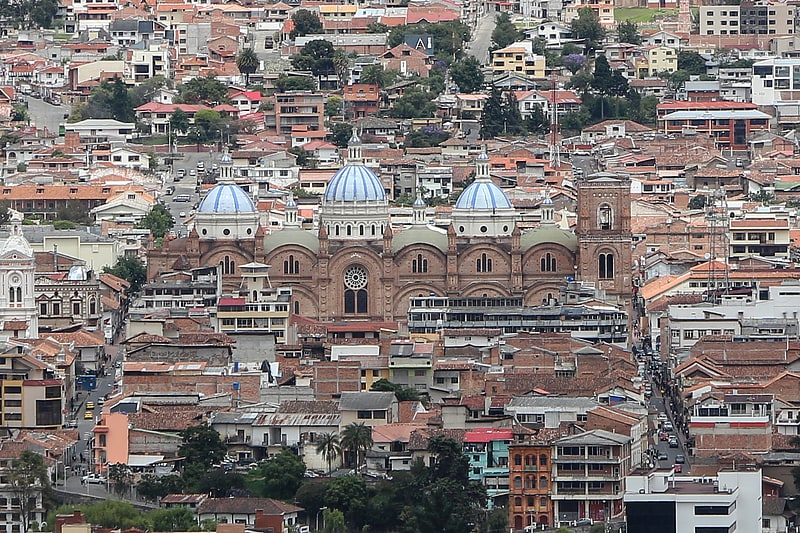
Also known as: Catedral de Cuenca
Cathedral in Cuenca, Ecuador. The Cathedral of the Immaculate Conception, commonly referred to as the New Cathedral of Cuenca, is the cathedral church in Cuenca, Ecuador. It is situated in front of Parque Calderon.
The plan of the Cathedral was drawn up by Juan Bautista Stiehle (1829-1899) — a German-born friar who arrived in Cuenca from Alsace in 1873 — on suggestions made by Bishop León Garrido. The Cathedral took over the function of the nearby Old Cathedral that had become too small. Construction works started in 1885 and lasted for almost a century. This building combines many architecture styles, but Romanesque Revival is predominant. The cathedral is surmounted by three giant domes covered by striking blue and white glazed tile from Czechoslovakia. Its stained glass windows were created by Spanish artist Guillermo Larrazábal.
Its towers are truncated due to a calculation error of the architect. If they had been raised to their planned height, the foundation of this Church to the Immaculate Conception, would not have been able to bear the weight. In spite of the architect's immense mistake, the skyline of its domes has become a symbol for the city. Its facade is made of alabaster and local marble, while the floor is covered with pink marble, brought from Carrara (Italy). When the Cathedral was first constructed 9,000 out of Cuenca's 10,000 inhabitants could fit in the building.[4]
Address: Benigno Malo, Cuenca
Santa Ana Hill, Guayaquil
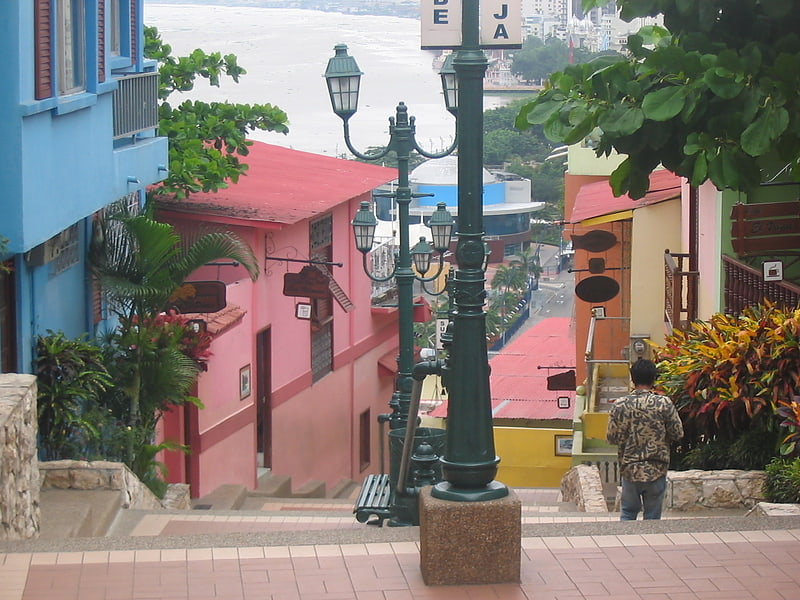
Also known as: Cerro Santa Ana
Santa Ana Hill is a tourist attraction in Guayaquil, Ecuador.[5]
Address: Cerro Santa Ana, Guayaquil
Museo Antropologico y de Arte Contemporaneo, Guayaquil

Also known as: Centro Cultural Libertador Simón Bolívar
Museum in Guayaquil, Ecuador. Museo Antropologico y de Arte Contemporaneo, or MAAC is a state-of-the-art museum in Guayaquil, Ecuador celebrating Ecuadorian, Latin American and Pre-Columbian art and culture. MAAC is a welcome addition to Malecón 2000, the renovated riverwalk in Guayaquil. Inaugurated on 30 July 2003, MAAC aims to constitute itself in a catalyst for the development of the local, regional and national artistic culture.
MAAC's mission is to harness the institutional cultural patrimony, by showcasing a valuable collection of 50,000 native Ecuadorian archaeological pieces and over 3,000 modern works of art.
The MAAC offers many integrated programs that include exhibitions, conferences, round tables, factories, projections of cinema, scenic arts, through which it aims to fulfill the challenges of putting the cultural patrimony to the service of the development of the Country and to help in cultural education of the community, on the base of a permanent interchange, stimulating the critical conscience of a diverse community.[6]
Address: Malecón Simón Bolivar 206, 090313 Guayaquil
Guayaquil Metropolitan Cathedral, Guayaquil
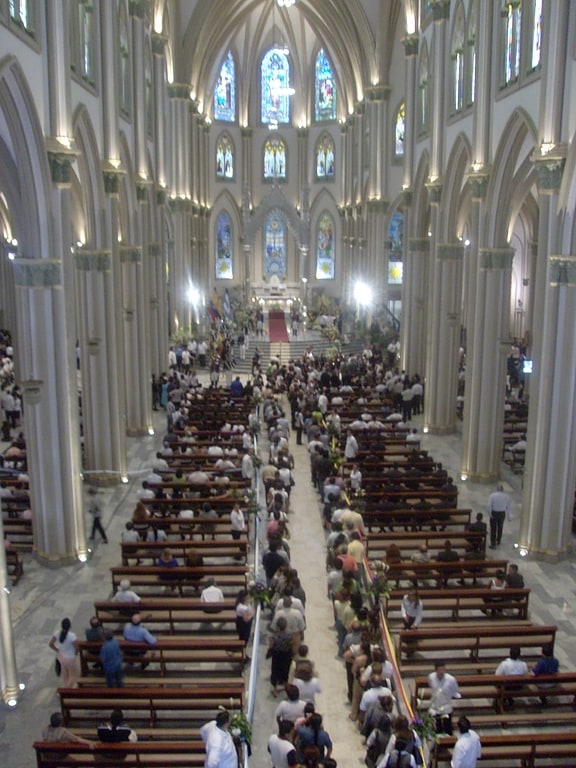
Also known as: Catedral metropolitana de Guayaquil
Ornate gothic cathedral with mass. The Metropolitan Cathedral of Guayaquil is a cathedral in the center of Guayaquil, Ecuador.
The current cathedral is the successor of the cathedral that was Guayaquil's main cathedral at the time of the city's founding. The original cathedral was made of wood and located on Santa Ana Hill. This cathedral was destroyed in a fire in 1892.
The current building was constructed in a neo-Gothic style between 1924 and 1937. It is located on Calle Chimborazo between Avenida 10 de Agosto and Avenida Clemente Ballén.[7]
Address: 10 de Agosto, Guayaquil
Old Cathedral of Cuenca, Cuenca
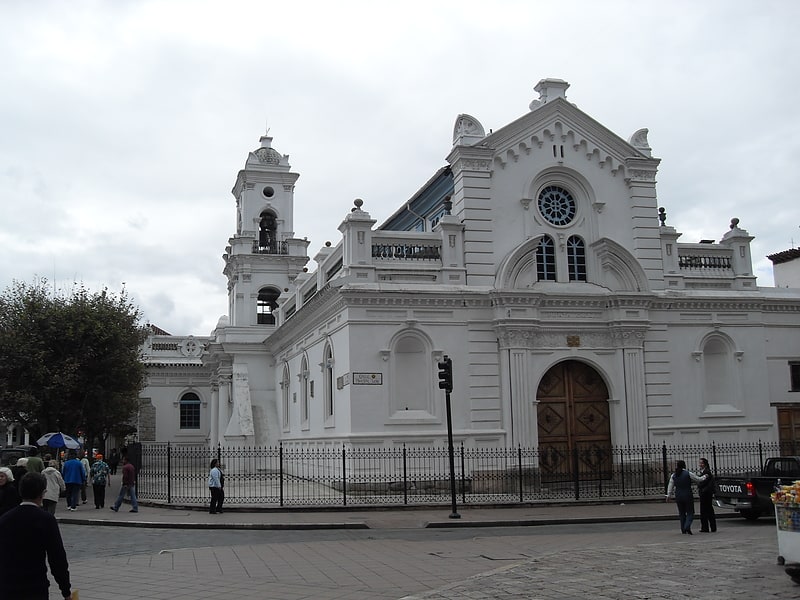
Also known as: Catedral vieja de Cuenca
Church in Cuenca, Ecuador. The Church of the Shrine — commonly referred to as the Old Cathedral of Cuenca — was the main place of Spanish worship during the time of Spanish colonization in Cuenca, Ecuador. It functions today as the Museum for Religious Art and is located at the Parque Calderon, opposite the New Cathedral.[8]
Address: Luis Cordero, Cuenca
Museo de las Culturas Aborígenes, Cuenca
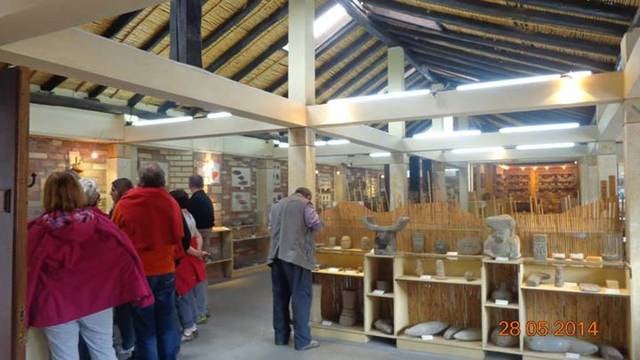
Museum, Specialty museum
Address: Calle Larga 5-24 y Mariano Cueva, 010150 Cuenca
Cathedral Basilica of Our Lady of the Elevation, Ambato

Building in Ambato, Ecuador. The Cathedral Basilica of Our Lady of the Elevation Also Ambato Cathedral is the name that receives a religious building that belongs to the Catholic Church and is located between Bolivar and Montalvo streets in front of the Juan Montalvo Park of the city of Ambato capital of the province of Tungurahua in the center of the South American country of Ecuador. It has the distinction of Minor Basilica since April 1961.
Its history goes back to 1698 when the original chapel was built that was destroyed by the earthquake of 1797. It was in 1954 when the present temple was inaugurated in replacement of another structure affected by a new earthquake in 1949. The church follows the Roman or Latin rite and is the seat of the Diocese of Ambato (Dioecesis Ambatensis) that was created in 1948 by Pope Pius XII through the bull Quae ad maius.
It is under the pastoral responsibility of Bishop Jorge Giovanny Pazmiño Abril.[9]
Address: Sucre 06-50 y Juan Montalvo, Ambato 180101, Ambato
La Liria, Ambato

Botanical garden in Ambato, Ecuador. Botanical Garden Atocha-La Liria is a botanical garden located on Avenue Circunvalación, in Ambato, Tungurahua Province, Ecuador. It consists of 14 hectares and dates from 1849.[10]
Martínez-Holguín House Museum, Ambato
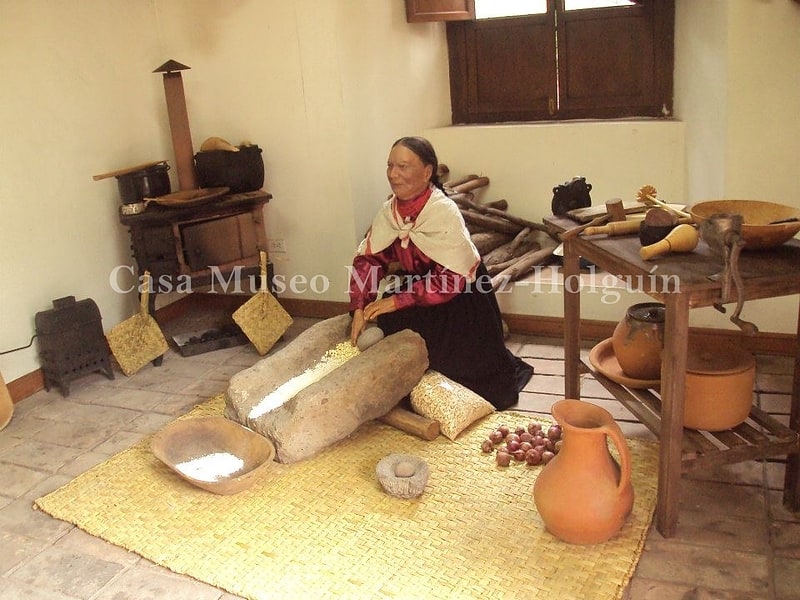
Also known as: Casa Museo Martínez-Holguín
Museum in Ambato, Ecuador. Martínez-Holguín House is a historic house museum in Atocha parish, in the northern suburbs of Ambato, Ambato Canton, Tungurahua Province, Ecuador. It is situated in the Botanical Garden Atocha-La Liria, and dates to 1865, when it was built by Dr. Nicolás Martínez Vasconez. Since then, it has been the residence of several notable figures, including Luis A. Martínez, the author of the novel A la Costa and Minister of State and Education, who established the Colegio Normal de Agricultura in Ambato, and scientist Augusto Nicolás Martínez. It has since been converted into a wax museum.[11]
Sierra Negra, Isabela
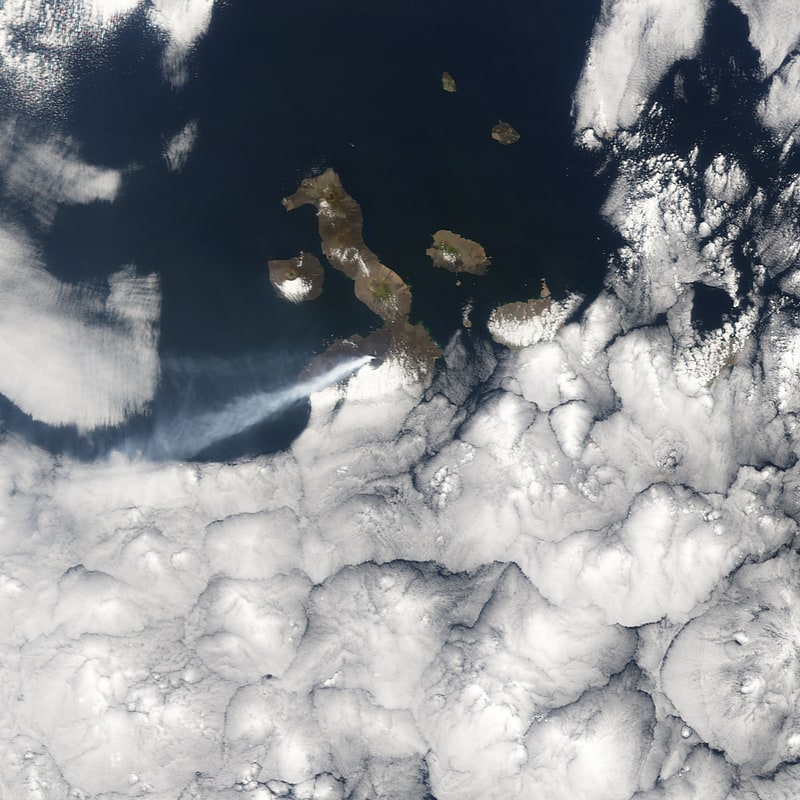
Active volcano with giant tortoises. Sierra Negra is a large shield volcano at the southeastern end of Isabela Island in the Galapagos that rises to an altitude of 1124m. It coalesces with the volcanoes Cerro Azul to the west and Alcedo to the north. It is one of the most active of the Galapagos volcanoes with the most recent historic eruption beginning in June 2018 and continuing through the summer.
Guided tours of the volcano typically start at Puerto Villamil and traverse the rim of the caldera along its East side before heading into the fresh lava fields north east of the main crater.[12]
Volcán Wolf, Isabela
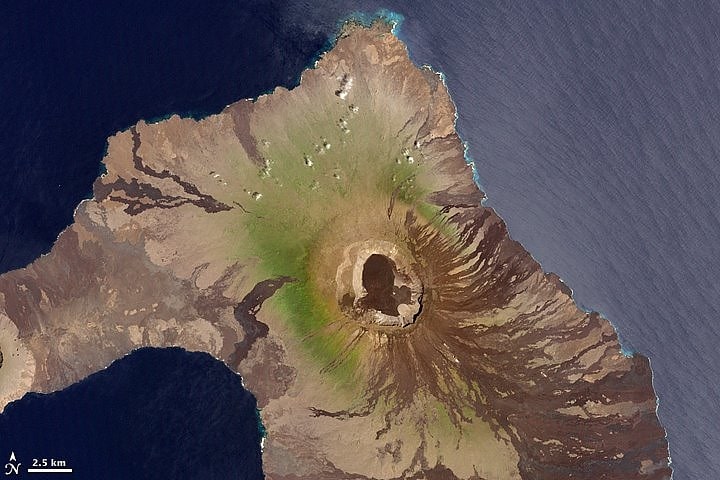
Islands' highest peak with unique shape. Wolf Volcano, also known as Mount Whiton, is the highest peak in the Galápagos Islands. It is situated on Isabela Island and reaches 1,710 m. It is a shield volcano with a characteristic upturned soup bowl shape.
The volcano was named after Theodor Wolf, a German geologist who studied the Galápagos Islands in the 19th century. Wolf Island in the north of the Galápagos is also named after the geologist.
Wolf Volcano's height makes it an ultra prominent peak (a peak with a topographic prominence of over 1,500 m (4,900 ft)).[13]
Cerro Azul, Isabela

Active volcano with a caldera lake. Cerro Azul is a shield volcano on the south western part of Isabela Island in the Galápagos Islands. At a height of 1,689 m it is the second highest peak in the Galapagos and due to its topographic prominence of over 1,500 m it is categorised as an ultra. The volcano is one of the most active in the Galapagos, with the last eruption between May and June 2008.[14]